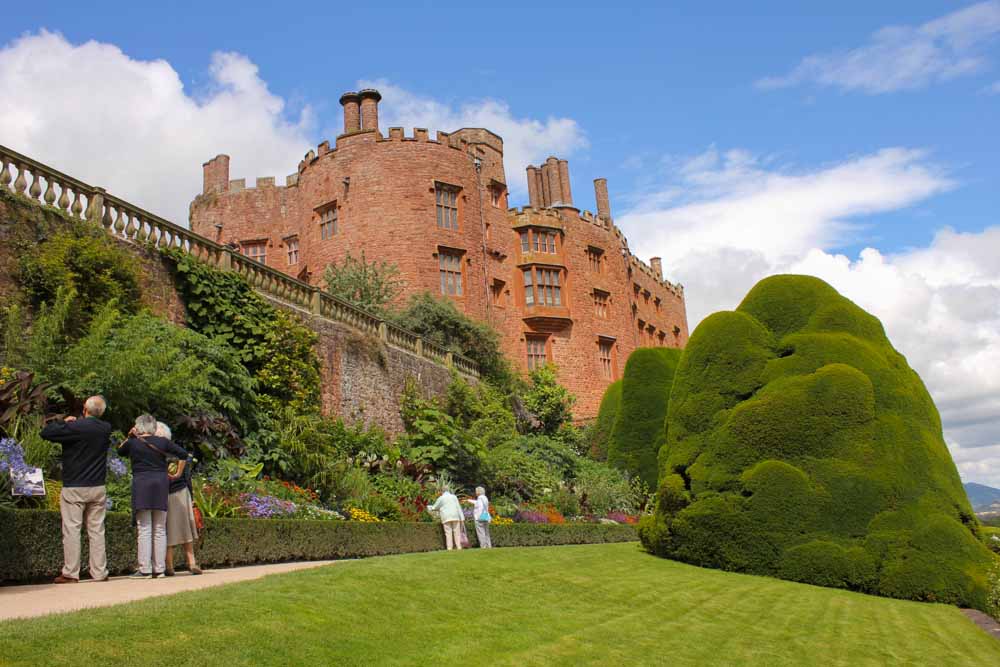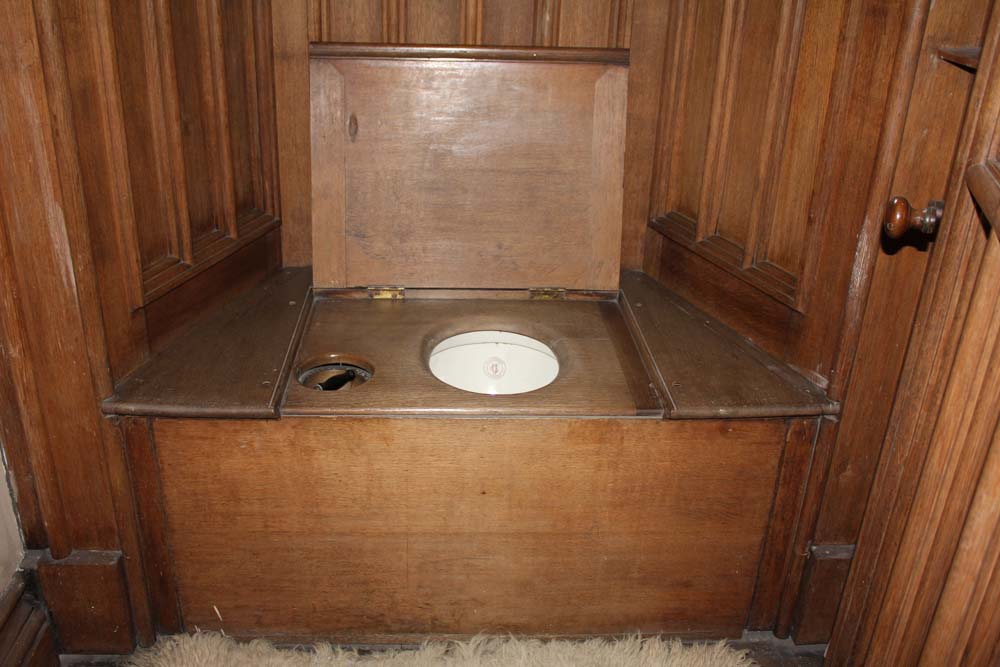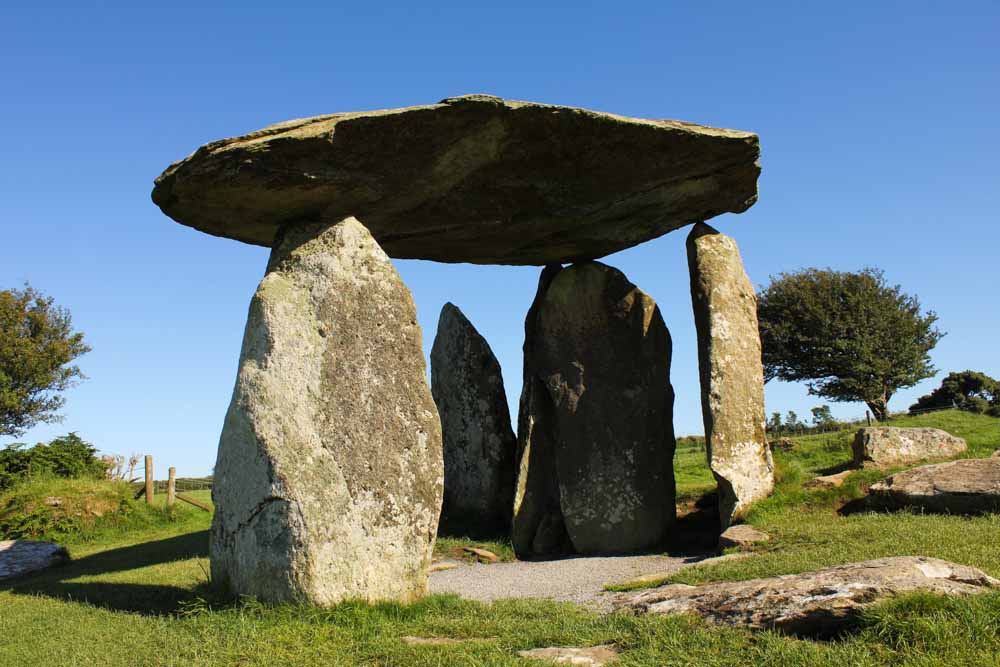I had toyed with the idea of visiting Wales for a long time, as so many of its fabulous castles are listed on the World Heritage List, but I was often discouraged by the thought of driving on the left side. However, after surfing the net, it became obvious that it was highly complicated to use public transport there. So using all my courage I dropped the flag and booked a trip.
Jet2 airlines operates a low-cost flight to Manchester which lands in the late night hours. The guy from the car rental company had visited Budapest a few weeks earlier for a stag party and immediately understood my concerns, so asked what kind of car I drove at home. Fortunately, the same type of car was available, so at least the hire car was familiar to me. He then sat next to me in the car, patiently explaining everything I needed to know and after some practice, I started off. I booked a room in a hotel close to the airport so I did not cause a serious traffic jam during my fifteen minutes of slow driving.
Kind and patient
After visiting 95 countries, I thought I had developed quite a good routine – so I ignored the meticulous packing list which I had developed over the years. I soon realised my mistake, when I noticed that I had left my plug converter at home. As lots of things had to be charged – my GPS, mobile phone and camera – my first task was to get a new one. Fortunately, I found a Sainsburys’ supermarket around the corner from the hotel, where I managed to buy one, whilst wiping away a few teardrops seeing the rich supply of food. The biggest surprise was the vegetable corner – it did not matter how closely I looked, I could not find any parched lettuce or rotten grapes. The next morning I was equally surprised by the old cashier who winked at me kindly – this rarely happens at home in a food store. Over the coming days, I got used to it and was happy that people were much more friendly and kind and smiled more often than at home. However it is also a fact that one has to get used to the local, special humour (which can be familiar from the movie The Englishman Who Went Up a Hill, But Came Down a Mountain).
The first stop was the most spectacular part of the 18-kilometer long Pontcysyllte canal – the Pontcysyllte Aqueduct – which carries the Llangollen Canal across the River Dee. These special places are the ones I love visiting the most, especially after visiting a few hundred museums and cathedrals. I had a look from a distance, then I had a look close up – and then I walked on it back and forth, as beside the narrow navigable canal is a pedestrian sidewalk. This wonderful construction which is over 200 years old is listed on the UNESCO World Heritage List.

On the bank of the canal, I tried the world famous English dish of fish and chips as my first lunch, then made my way in the direction of Powis Castle.
By this time I was driving my car with admirable speed, meaning I was able to outdrive pedestrians and slower bicyclists. I was reassured to find that no-one seemed to worry about my speed here. My co-drivers were endlessly patient, nobody urged me, nobody was blowing their horn – they were helpful and careful and on top of that, they even smiled at me.
The gardens are perhaps the most magnificent part of Powis Castle, despite the two dozen or so pensioners rambling around and obstructing the problem-free photo shoot, hovering around each single flower at length and discussing in detail which species they belong to.

The castle itself seemed to be much friendlier compared to rival castles. In other buildings like this, my first thought is usually how cold it would originally have been in the winter, but here there were lots of carpets, thick curtains and friendly panelling that lent the castle a warm atmosphere. In the kitchen, situated in the basement, volunteers were busy: women from the neighbourhood were sewing winter covers for the furniture so they would not get dusty during the off-season. Not only were they doing useful work, but evidently they also enjoyed it as they were all chatting and giggling. Volunteering is much more widespread in the Anglo-Saxon countries than in Hungary – with most of my British or American friends happy to participate in the activities of some sort of foundation or charity.
From Powis Castle, my route to the next hotel took me through the fields of Park Snowdonia. As far as the eye could see, huge slate mountains stretched in every direction.
I spent the night in a seaside town called Llandudno, in the north-west corner of Wales. I walked along the beach and, after taking pictures of the sunset and feeling like someone who had done a good job, I decided to find a place for dinner. Unfortunately I discovered at this point that Wales is not Ibiza, here every restaurant closes at 9 P.M.
Luckily I only had to starve until the next morning when I was offered a great English breakfast in the lodging house – nothing was missing from my plate starting with sausages through to fried beans, eggs and bacon.
Castle on top of a castle
On the UNESCO World Heritage List, there is a four-castle site named “King Edward’s Castles from the 13th-14th century”. This was my next destination. However, before visiting the first one I made a tiny detour to see the village with the world’s longest name – Llanfairpwllgwyngyllgogerychwyrndrobwllllantysiliogogogoch. In English, the name means “Mary’s house in the hollow of the white hazel rapid whirlpool at the church of the red cave.” In everyday life, even the British don’t try to pronounce the full name. Instead it’s affectionately known by its shorter and more common name: Llanfair PG.

The first old castle was Beaumaris, which is surrounded by moats and has a nice grassy inner garden, then Caernafon with its huge inner courtyard. After these castle walks, I went to a pub to use their restroom but was distracted by a TV screen showing a fantastically exciting handball match between Hungary and Iceland (we were in the middle of the Olympic Games). I settled down among the Welshmen and we cheered together until the end of the great game.
Along the route of the four old castles I decided to visit a fifth, newer one – Penrhyn, where the most stunning object was a flush toilet from 1820.

My next stop was Conwy castle and whilst there, I also visited the smallest house in Wales, a building of just 3 x 1.8 meters in ground space. The house had originally served as a home from the 16th century until 1900. The last tenant was a fisherman with a height of 1.9 meters. However, he was rehoused by the local Council as they were worried he could not straighten his back in the house. At that point the house was declared uninhabitable. However, it is interesting that the building is still owned today by the heirs of the last tenant and anyone can visit it for an entrance fee of just one Pound.

I started the next day with another typical English breakfast – kippers (which are salted or pickled smoked herrings) – before driving down to the south-west corner of Wales. Much of the coast road is built on 500 year old slate fields. They have been mining slate here since 1836 and still today, although only by surface mining. A few mines were open for tourists, so I decided to take a stop and go on a mine-tour.
Eventually Harlech castle, the last of the four Edwardian castles was within sight, but I could not drive up the hill and 12-degree slope – my left hand is not skilled enough to handle the gearshift and my car kept on stalling. The other drivers were patient but I was not, so I rolled back onto the main road and left for Pentre Ifan, in the direction of a 4500 year old megalith. It was not easy to find even with the help of GPS, spiralling on dirt-roads and pastures, many times clipping the hedgerows in order to give way to cars coming from the opposite direction. I had the recurring feeling that I was just going around in circles … but then I found it. One just wonders how anyone could place that 16-ton copestone on top of the others.

Before the day was over, I squeezed in a visit to St. David’s Cathedral, the oldest church in Wales. I then made the most of my modest little room in a boarding school, which operates as a youth hostel in the summer.
I started the third day fresh and joyful thanks to the brilliant sunshine and I was driving with increasing self-confidence. However, I still walked to the left side of the car and for a few moments, looked for the steering wheel and driver’s door before realised it was all on the other side. I also occasionally struggled with the gear stick in my left hand, but at least I had mastered the art of approaching, driving over and turning on roundabouts.
From the south-west corner of Wales, I headed for the south-east corner, all along the Southern coast. My first stop was Castell Coch, a man-sized castle which did not have many rooms but the rooms that did were furnished in an extravagant way.

My World Heritage task for the day was a visit to the Blaenavon industrial area, where I skipped the mine-tour given the 36 degree heat, which was so unusual for Wales. Instead I visited some of the buildings above ground, including a workers’ shower room which was rated “very modern” in the 19th century. Later in the day, I visited Tintern Abbey which was highly compelling even though it is in ruins.

Next morning, I headed north into England and the Ironbridge valley, where I was lucky enough to be the first visitor. This area was the Silicon Valley of the 18th century, and was the cradle of the English industrial revolution. Its emblematic icon is the first cast iron road bridge.

Some old factory buildings in the area between Derby and Matlock are also World Heritage Sites. Sadly most of the huge red-brick buildings can only be viewed from the outside, but it still worth driving this way as the route itself is fascinating.
Before returning the car, I made a slight detour to see the third largest telescope in the world (at the Jodrell Bank Discovery Centre). As huge as it is, it’s actually quite difficult to find. It reminded me of the feeling you get whilst walking in an old town, looking for the cathedral which can only be seen from the distance and which hides away as you get closer to it. However, once you find the telescope, the visit becomes very tourist friendly with great subtitles and signs to explain its history and benefits. There is also a great interactive visitor centre built nearby.

My final task was to eat a great steak for dinner, instead of spending the same amount of money on a dry sandwich on the low-cost plane. It was then definitely time to go home … at the last roundabout before the airport, my attention waned and I drove onto the roundabout in the wrong direction. But luckily the English drivers were alert and skilfully dodged me. At the end of the journey – surprising both myself and the car rental boy – I managed to return the car without a scratch.

